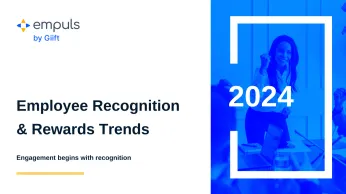Di halaman ini
What makes employees excited to come to work each day? It’s not just the salary or the job title—it’s the positive company culture they experience. A workplace where people feel valued, heard, and connected can make all the difference between just showing up and showing up with purpose.
But how to build a positive company culture that lasts? It starts with defining and bringing your core values to life through leadership, communication, recognition, and daily practices. A strong culture doesn’t happen accidentally—it’s intentionally created, nurtured, and evolved.
In this blog, we’ll explore what company culture means, why it matters more than ever, and actionable steps you can take to create a thriving environment where people love to work—and stay.
Apa yang dimaksud dengan budaya perusahaan?
Company culture refers to the shared values, beliefs, attitudes, and behaviors that characterize an organization and guide how employees interact with each other and customers.
A positive workplace culture that binds a company with employee satisfaction, job satisfaction, and work-life balance constitutes a value-driven company culture.
According to Gallup3, employees who feel strongly connected to their organization's culture are 3.7 times more likely to be engaged at work and 55% less likely to actively look for another job. This proves that organizations must prioritize offering their employees a value-driven company culture.
Aspek-aspek utama dari budaya perusahaan meliputi:
- Misi, nilai, dan tujuan perusahaan yang memandu pengambilan keputusan dan perilaku karyawan
- Norma, ekspektasi, dan aturan tidak tertulis yang memengaruhi bagaimana segala sesuatunya dilakukan
- Gaya kepemimpinan dan cara manajer berinteraksi dengan dan mendukung karyawan
- Lingkungan, kebijakan, dan tunjangan di tempat kerja yang berdampak pada kepuasan dan retensi karyawan
- Tradisi, perayaan, dan interaksi sosial yang menumbuhkan rasa kebersamaan
Types of company culture
Understanding the different types of company culture can help you identify where your organization currently stands—and where it should be headed. Each type shapes employee behavior, decision-making, and overall workplace vibe in its own way. Here's a quick look at the most common ones.
1. Budaya adhokrasi
Imagine an organization that's flexible and structured, constantly innovating while maintaining order. That's the essence of an adhocracy culture. It combines the adaptability of "ad hoc" (meaning "for this purpose") with the organization of a bureaucracy.
Dalam adhocracy, aturan tidak menghambat kreativitas. Sebaliknya, fokusnya adalah pada peningkatan berkelanjutan dan menantang status quo.
Where can we use adhocracy culture?
This fast-paced environment is ideal for startups and tech companies like Apple, Google, and Facebook. It allows them to be nimble and keep pace in a highly competitive, ever-changing market.
Namun, ketika perusahaan-perusahaan ini tumbuh menjadi raksasa teknologi, satu adhocracy di seluruh organisasi mungkin tidak akan berkelanjutan. Beberapa departemen, seperti kepatuhan atau etika, mungkin membutuhkan lebih banyak struktur dan pendekatan yang lebih lambat dan lebih metodis.
Adhocracy enables businesses to flourish in volatile settings by promoting a culture of perpetual enhancement and strategic risk-taking. As companies grow, some departments may need a more structured approach while keeping their innovative spirit.
Karakteristik:
- Penekanan pada inovasi dan kreativitas.
- Mendorong pengambilan risiko dan eksperimen.
- Fast-paced and dynamic work environment.
- Fleksibilitas dan kemampuan beradaptasi terhadap perubahan.
Pros:
- Mendorong inovasi dan diferensiasi yang berkelanjutan.
- Mendorong karyawan untuk berpikir kreatif dan mengambil risiko.
- Mempromosikan budaya kemampuan beradaptasi dan ketangkasan.
Cons:
- Potensi kurangnya fokus karena perubahan yang cepat.
- Mungkin akan sangat membebani bagi karyawan yang lebih menyukai stabilitas.
2. Budaya klan
Clan culture at work is like a close-knit family with tight teams and a shared sense of purpose. This culture is often found in small, family-owned businesses or startups where hierarchy takes a backseat to collaboration. Employees, regardless of their position, feel valued and supported.
Contoh-contoh budaya klan
Companies like Tom's of Maine, Redmond (Real Salt), and Chobani are prime examples of clan culture, prioritizing its employees and fostering a clan-like atmosphere.
Keistimewaan budaya klan
- Kerja sama tim adalah tulang punggung budaya ini, dengan semua orang merasa nyaman untuk berbagi ide dan umpan balik yang jujur.
- Mentorship dan magang sering kali juga memainkan peran penting, memastikan keterampilan dan nilai-nilai diturunkan secara organik.
- Salah satu kekuatan terbesar dari budaya klan adalah keterlibatan karyawan yang tinggi, yang dapat diterjemahkan ke dalam layanan pelanggan yang luar biasa.
Karakteristik:
- Komunikasi yang terbuka dan informal.
- Lingkungan kerja yang mendukung.
- Struktur organisasi yang datar dengan hierarki yang minimal.
- Hubungan yang kuat di antara para karyawan.
Pros:
- Mendorong umpan balik dan komunikasi yang terbuka.
- Membina hubungan yang kuat di antara rekan kerja.
- Mempromosikan rasa memiliki dan persatuan.
Cons:
- Dapat menyebabkan kurangnya formalitas dalam interaksi bisnis.
- Risiko karyawan menjadi terlalu santai dalam pendekatan mereka terhadap pekerjaan.
- Mempertahankan lingkungan dinamis yang erat bisa menjadi tantangan tersendiri. Perluasan operasi dapat menyebabkan hilangnya fokus dan ketangkasan.
3. Budaya hierarki
Hierarchy culture is a type of organizational culture that strongly emphasizes structure, order, and rules. In this culture, the organization is structured hierarchically, with a detailed hierarchy system that defines job titles, roles, and levels.
Employees are expected to follow the rules and procedures set by upper management, with a top-down flow of information and communication. This culture thrives on transparent chains of command, established procedures, and well-defined roles. Everyone knows who they report to, who they manage, and the rules that govern their work. Following these rules and doing things the right way is paramount.
Tantangan dalam budaya hierarki
- Hierarchy cultures might struggle to adapt quickly to changing markets or innovate rapidly.
- The emphasis on established procedures can stifle creativity and responsiveness in a world increasingly demanding agility.
Kelebihan dari budaya hierarki
- Hierarchy cultures excel at streamlining operations and clearly defining duties. This makes them a natural fit for finance, healthcare insurance, and oil and gas industries, where stability and risk management are crucial.
- Struktur yang jelas memungkinkan perusahaan-perusahaan ini berfungsi secara efisien dan menangani proses yang kompleks secara efektif.
Kontra dari budaya hierarki
- Inflexibility and resistance to change
- Barriers to communication
- Lack of creativity
Meskipun hierarki menawarkan stabilitas, perusahaan dengan budaya ini mungkin perlu mencari cara untuk menerima risiko yang telah diperhitungkan dan mendorong tingkat adaptasi agar tetap kompetitif dalam jangka panjang.
4. Budaya pasar
In market cultures, the game is all about winning. Companies here are laser-focused on maximizing profits and staying ahead of the pack. They prioritize results and watch the competition, constantly striving to deliver products and services that keep customers coming back for more.
Contoh budaya pasar
- Tesla
- General Electric
- Amazon
Bagi perusahaan-perusahaan ini, inovasi adalah sumber kehidupan. Mereka membutuhkan aliran produk dan layanan terbaik untuk mempertahankan keunggulan mereka. Dorongan terus-menerus untuk mengungguli ini dapat memicu kreativitas dan menghasilkan kemajuan yang luar biasa.
Namun, tekanannya bisa sangat besar. Karyawan dalam budaya pasar sering kali menghadapi ekspektasi yang tinggi dan tuntutan produktivitas yang tiada henti. Meskipun hal ini mendorong kesuksesan bisnis, namun hal ini juga dapat menyebabkan kelelahan karyawan dan pengabaian kesejahteraan karyawan.
The challenge for market cultures lies in striking a balance. They must maintain their competitive edge while fostering an environment that supports and motivates their workforce.
Karakteristik:
- Penekanan pada pencapaian hasil dan pemenuhan target.
- Lingkungan kerja yang kompetitif.
- Ekspektasi kinerja tinggi.
- Fokus pada efisiensi dan produktivitas.
Pros:
- Mendorong kinerja dan pencapaian tujuan.
- Mendorong pola pikir yang berorientasi pada hasil.
- Meningkatkan rasa urgensi dan akuntabilitas.
Cons:
- Risiko menumbuhkan lingkungan yang kejam.
- Potensi kelelahan karena budaya kerja dengan tekanan tinggi.
Why is positive company culture important?
Company culture plays a vital role in the success and well-being of both an organization and its employees. Here's a breakdown of why it holds so much importance:
1. Attracting and retaining top talent
Attracting and retaining top talent is one of the key aspects of building a strong and positive company culture.
- Employer branding: A strong culture attracts qualified candidates who identify with the company's values and mission. It creates a positive reputation in the job market, making the company more attractive to potential hires.
- Employee satisfaction: People are likelier to stay with a company where they feel valued, respected, and belonging. A positive culture fosters job satisfaction and reduces turnover rates, saving the company time and money on recruitment.
2. Boosting productivity and performance
Employees’ performance and productivity tend to rise when an organization prioritizes building a positive company culture.
- Motivation and engagement: Employees who feel connected to the company's goals and share its values are more likely to be motivated and engaged in their work. This translates to higher productivity, better problem-solving, and a drive for excellence.
- Collaboration and teamwork: A strong culture emphasizes collaboration and teamwork, which can lead to better communication, knowledge sharing, and innovation. Employees are more likely to help each other out and work towards shared objectives.
3. Enhancing customer experience
- Employee happiness: Happy and engaged employees provide better customer service. A positive culture translates to a more positive and helpful attitude toward customers, ultimately leading to higher customer satisfaction and loyalty.
- Brand advocacy: Employees who believe in the company's mission and values become brand advocates. They're more likely to go the extra mile for customers and promote the company positively.
4. Overall business success
- Reduced costs: Lower employee turnover, higher productivity, and a positive brand reputation all contribute to a company's bottom line. A strong culture can lead to significant cost savings and improved financial performance.
- Adaptability and innovation: A culture that encourages open communication, embraces new ideas, and fosters a willingness to learn can help a company adapt to change and stay ahead of the curve in a competitive market.
Bagaimana membangun budaya perusahaan yang positif
Building a positive company culture is about intentionally creating an environment where employees feel valued, connected, and inspired to do their best work. It’s more than perks—it's about purpose, people, and practices that shape everyday experiences.
Here’s a comprehensive guide on how to build a positive company culture:
1. Define and live your core values
Your company values should be more than words on a wall—they should shape your decision-making, influence your behavior, and guide your company’s growth. Articulated values help employees align their efforts with a common purpose, creating unity and direction.
Tips to implement:
- Co-create values with input from employees for authenticity.
- Incorporate them into hiring, onboarding, and goal-setting processes.
- Use them to guide recognition programs and performance feedback.
2. Foster open and transparent communication
A transparent culture builds trust, reduces misunderstandings, and encourages collaboration. Employees who feel informed and heard are more likely to engage and contribute meaningfully.
Tips to implement:
- Hold regular team meetings and town halls to share updates.
- Encourage two-way feedback through surveys and 1:1 check-ins.
- Use digital platforms to create a space for continuous dialogue.
3. Recognize and reward your employees
Appreciation fuels engagement. When recognition is regular and sincere, it reinforces positive behavior and motivates employees to do their best work.
Tips to implement:
- Set up peer-to-peer recognition programs.
- Celebrate small wins, not just major milestones.
- Align rewards with values to highlight what matters most.
4. Promote inclusivity and belonging
A strong culture includes everyone—regardless of background, identity, or role. Employees who feel accepted and valued are more likely to stay, grow, and advocate for the organization.
Tips to implement:
- Provide DEI training and inclusive policies.
- Recognize diverse cultural events and identities.
- Facilitate safe, open discussions on inclusivity and fairness.
5. Support growth and development
Employees thrive in environments where they can grow. Providing career development opportunities shows you’re invested in their long-term success and helps retain top talent.
Tips to implement:
- Offer upskilling and mentorship programs.
- Create individual development plans and internal mobility paths.
- Encourage knowledge sharing and cross-functional projects.
6. Encourage work-life balance and well-being
A culture that values well-being leads to healthier, more productive employees. Empower your people to take care of themselves without guilt.
Tips to implement:
- Offer flexible work arrangements and mental health resources.
- Encourage time off and discourage working beyond hours.
- Introduce wellness perks like travel vouchers, fitness stipends, or mindfulness sessions.
7. Measure and improve continuously
A healthy culture is always evolving. Regularly checking in with employees ensures that your initiatives stay relevant and practical.
Tips to implement:
- Run engagement surveys and act on feedback.
- Track participation in programs and events.
- Use analytics to identify cultural strengths and gaps.
How Empuls helps build a positive company culture that lasts
Positive company culture isn’t built overnight—and it doesn’t happen by accident. It takes consistency, recognition, transparency, and a genuine commitment to employee well-being. That’s exactly what Empuls delivers.
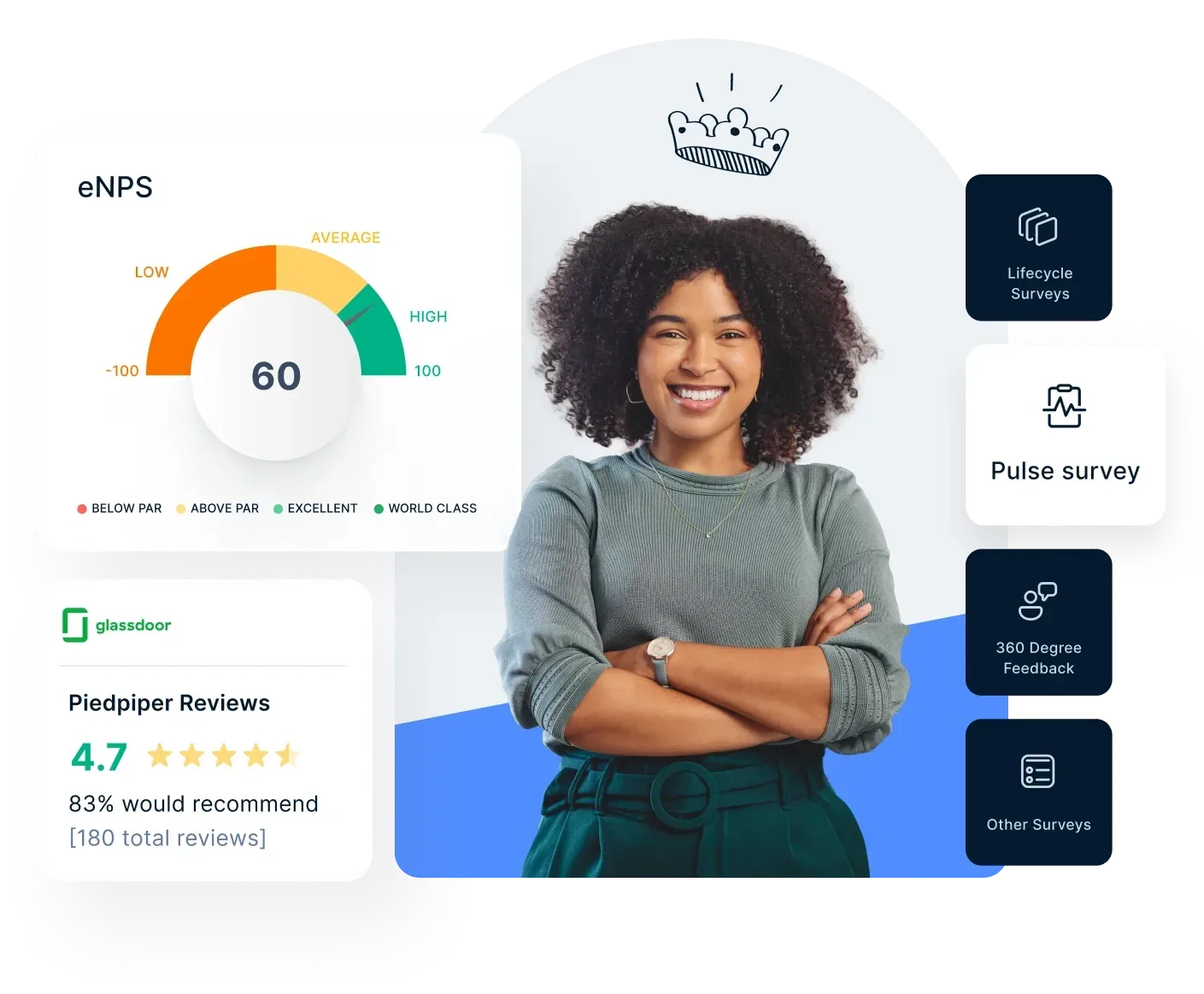
Empuls is an all-in-one employee engagement and culture platform designed to help HR and leadership teams shape a thriving culture—where people feel connected, valued, and aligned with the company’s mission. Whether your workforce is remote, hybrid, or spread globally, Empuls brings everyone together on a single platform that powers everyday engagement.
Here’s how Empuls helps you build culture with intent and impact:
⭐ Make recognition a daily habit
Move beyond once-a-year awards. Empuls makes it effortless to recognize employees in real-time—with peer-to-peer recognition, spot bonuses, and automated milestone celebrations. When employees feel appreciated consistently, they stay motivated and committed.

💬 Strengthen employee connection
Empuls acts as your internal social hub—empowering employees to communicate openly, celebrate team wins, and build a sense of belonging through a social intranet. Whether it’s a remote shout-out or a team-wide update, everyone stays in the loop and involved.
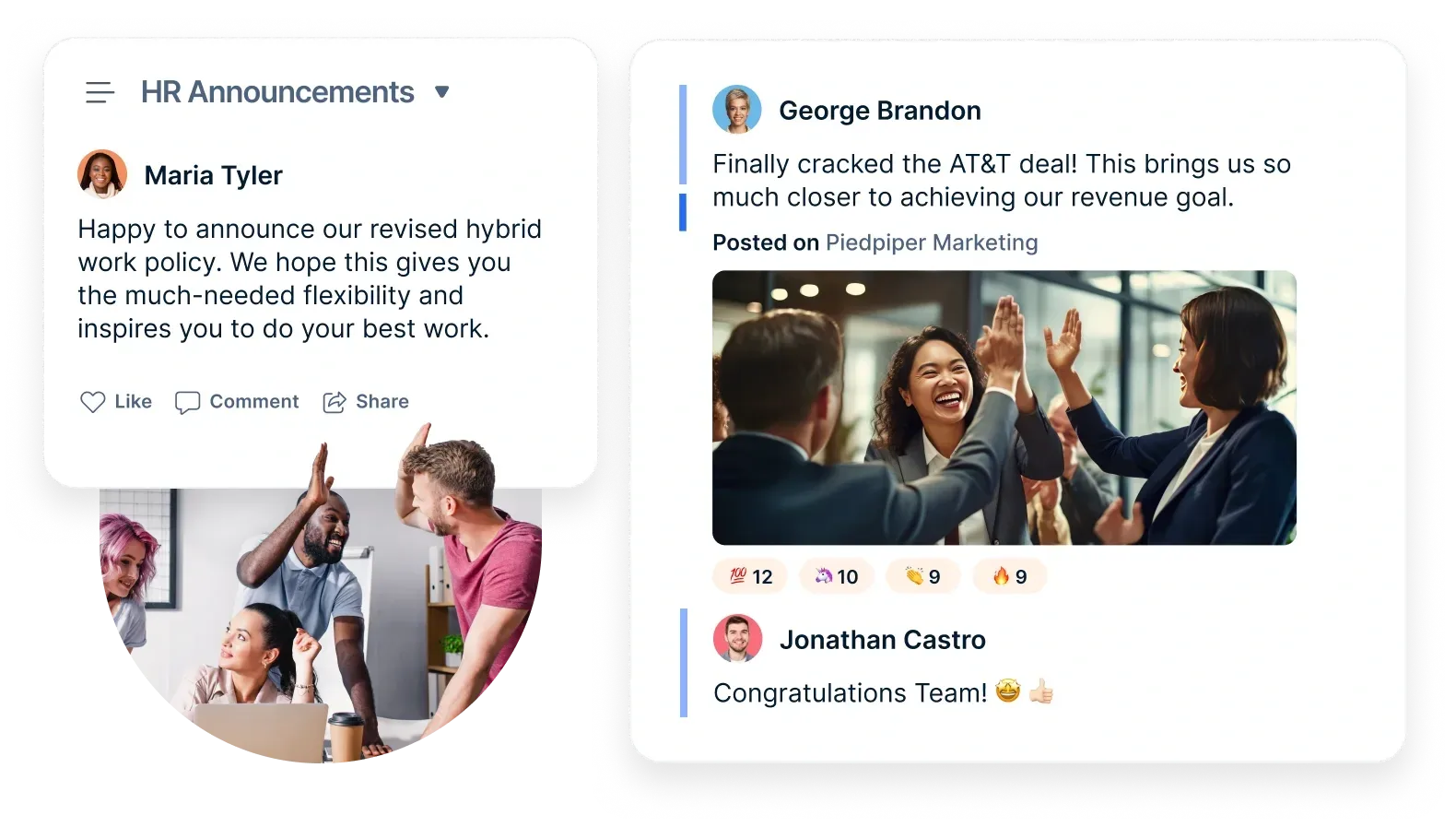
🧭 Embed values into daily actions
Link recognition and rewards to your core company values to reinforce what matters most. This creates behavioral alignment, builds purpose, and helps every employee see how their contributions tie into your larger mission.
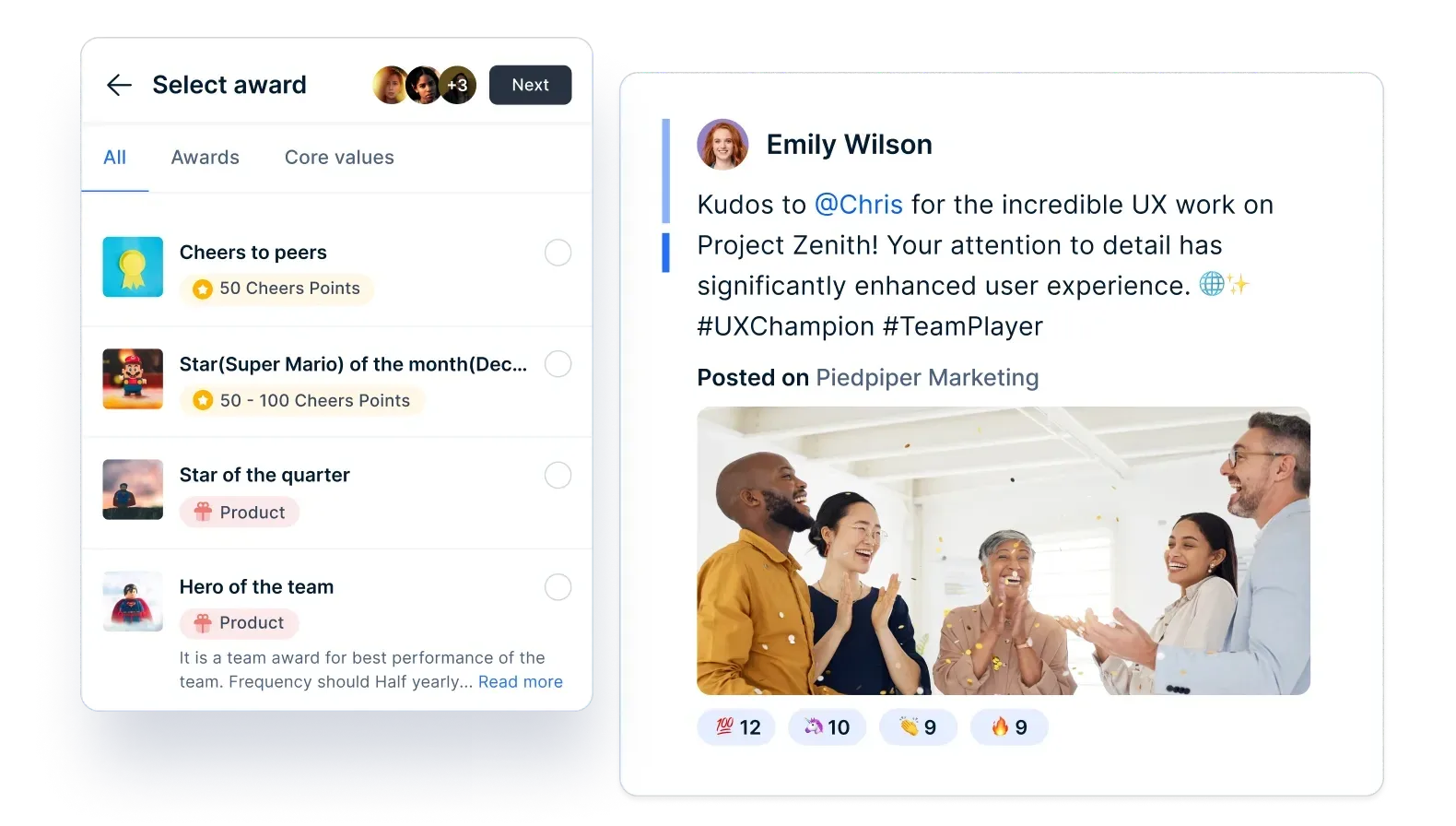
📢 Give employees a voice that drives change
Empuls makes it easy to run pulse surveys, eNPS, and lifecycle feedback—capturing real-time insights into how employees feel. You can act fast, close feedback loops, and ensure your culture evolves in step with your people.
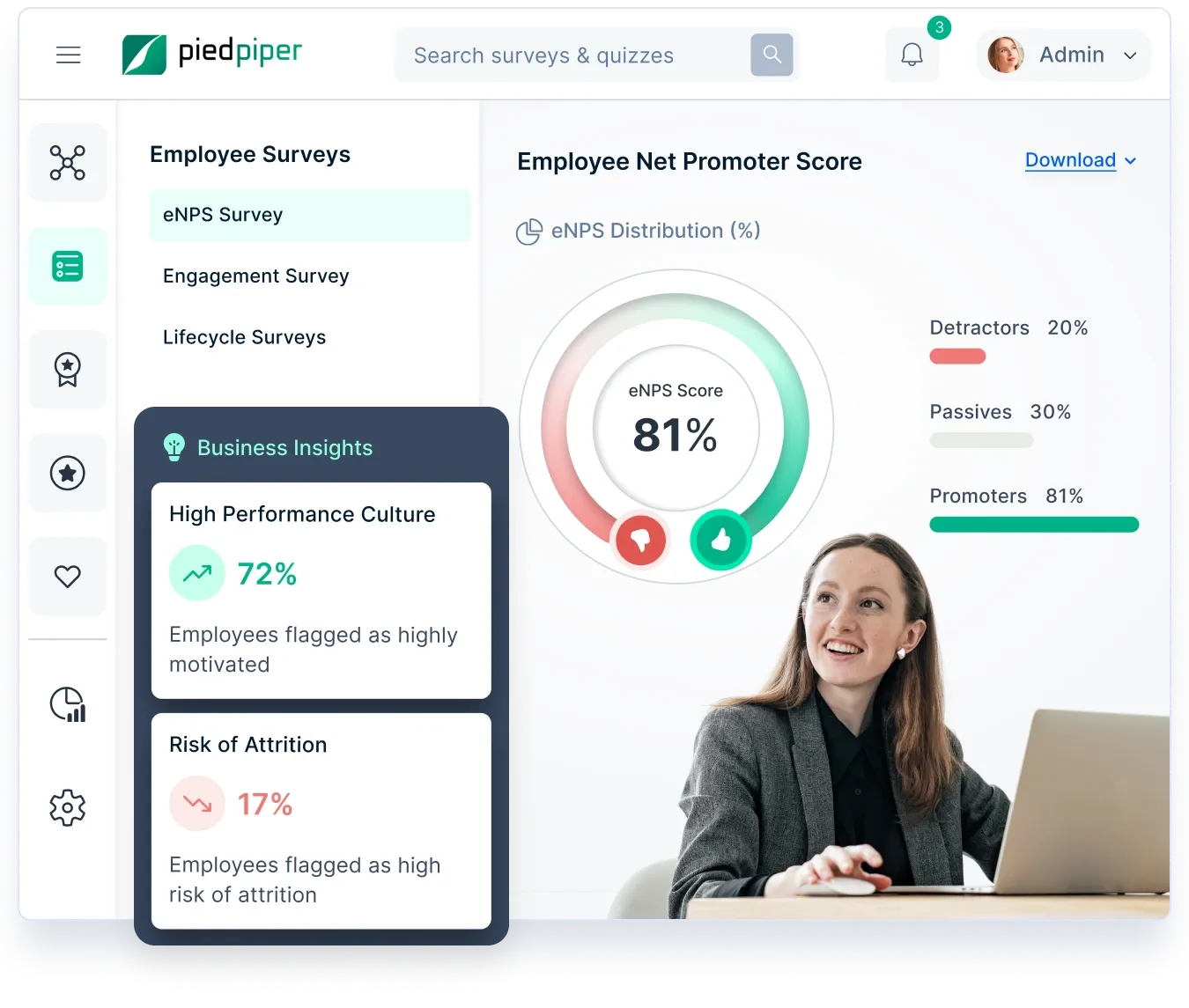
📊 Turn data into decisions
With built-in engagement analytics, you’ll never have to guess what’s working. Track recognition frequency, feedback participation, and engagement trends to make smarter, people-first decisions that boost culture from the inside out.
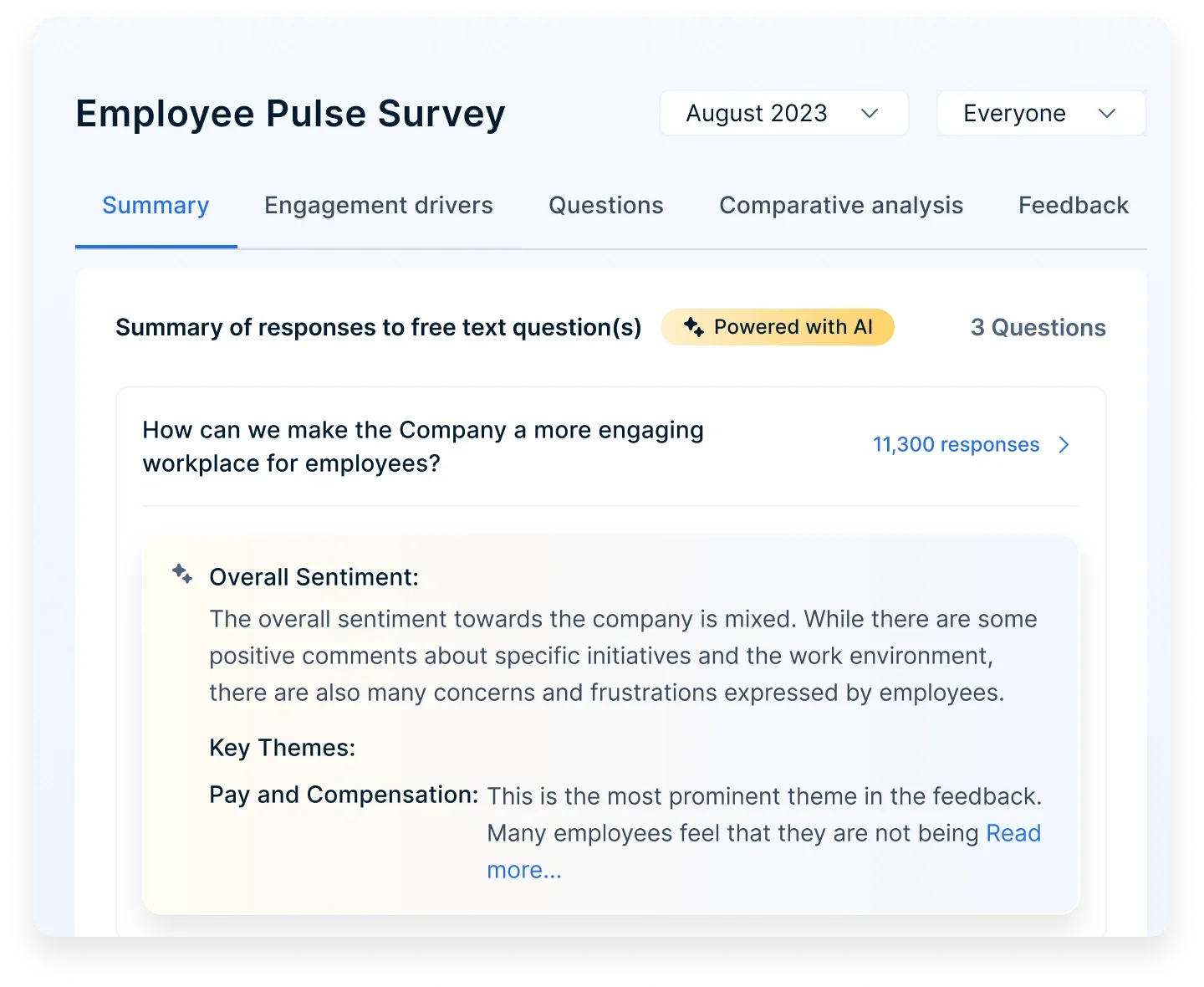
Empuls helps you turn culture into a strategic advantage—by making recognition, feedback, and connection part of your everyday workflow. Whether you're a growing startup or an enterprise leader, Empuls is the culture engine that drives sustainable engagement.
Start your free trial or book a demo with Empuls today and take the first step toward a more positive, engaged, and thriving organization.
Kesimpulan
Developing a positive company culture re-structures an organization to provide an eco space where employees are valued and cared for. A company must foster clear communication of values, consistent leadership, and an inclusive environment.
Evaluating company culture involves regular feedback, measuring alignment with core values, and analyzing the impact on employee satisfaction and performance.
Organizations can create a thriving workplace where employees feel valued and motivated by prioritizing company culture. This, in turn, translates to a competitive advantage, as a positive culture attracts top talent, reduces turnover, and drives long-term success.
Whether you're just starting to build your company culture or looking to refine and strengthen it, remember that culture is an ongoing journey that evolves with your organization. Embrace it, nurture it, and watch your company flourish.








